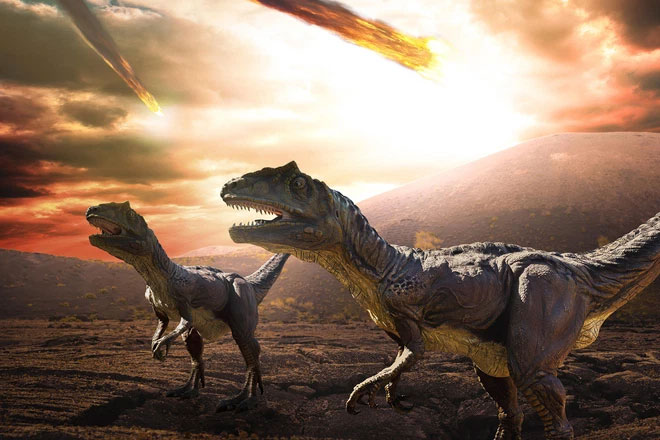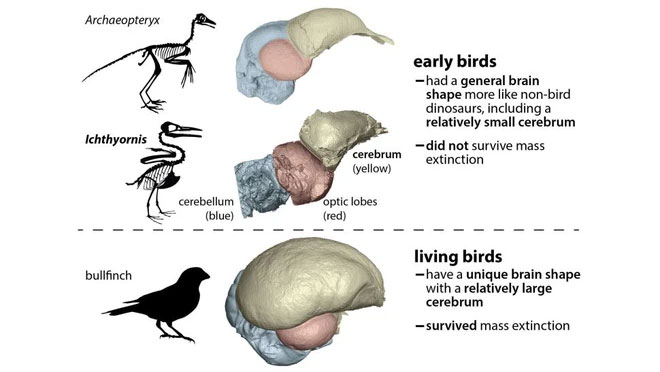About 66 million years ago, a meteorite struck Earth, leading to the extinction of non-avian dinosaurs. This impact triggered a series of catastrophic events: shockwaves, wildfires, acid rain, tsunamis, and volcanic eruptions—killing approximately 80% of all animal species. However, some species of dinosaurs survived: the birds.

66 million years ago, a meteorite struck Earth, killing about 80% of all animal species, including dinosaurs.
Nevertheless, not all bird species survived; some went extinct. Well-preserved skulls of ancient birds have helped researchers better understand how certain bird species managed to survive the impact.
Scientists discovered that the surviving bird species had larger cerebrums. However, it remains unclear why this brain region helped birds survive, as it is responsible for many processes. “Birds with larger brains may be able to change their behaviors quickly enough to adapt to environmental changes,” said Chris Torres, a researcher at Ohio University.

Fossil of Ichthyornis.
Bird bones are very fragile and rarely fossilize in good condition, making it difficult for scientists to observe the braincase of ancient birds. However, a few years ago, researchers found a well-preserved fossil of Ichthyornis, a prehistoric bird with teeth that lived during the Late Cretaceous period, in a rock formation dated between 87 and 82 million years ago in Kansas.
This fossil has an almost complete skull, preserving most of the bones that make up the skull.
Torres and colleagues used computed tomography (CT) scanning to digitally reconstruct the skeletal and brain structures of Ichthyornis. Shape analysis revealed that ancient birds like Ichthyornis had “primitive” brains; its brain resembled that of dinosaurs more than that of modern birds.

The brain of Ichthyornis resembles that of dinosaurs more than that of modern birds.
According to Torres, living birds have a significantly larger cerebrum compared to the rest of their brains. The cerebrum of modern birds is larger than that of ancient birds and dinosaurs that lived just before the mass extinction at the end of the Cretaceous period. Since Ichthyornis, a close relative of modern birds, still did not have a cerebrum as large as that of today’s birds, scientists infer that these larger brains evolved from the ancestors of living bird species.
They suggest that the larger cerebrum helped the ancestors of today’s birds survive the disaster, which explains why only certain bird species survived and not any other dinosaur species.


















































